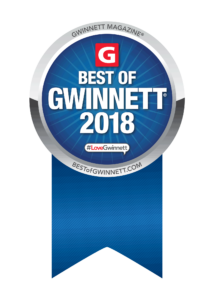 Varicose Veins
Varicose Veins
It has been estimated that more than 70 million people in the US will suffer from a venous disorder at some point in their life. In the beginning stages, a patient may not even be aware of the condition until symptoms become common. These conditions are caused by a malfunction in the one-way valves located in the veins, which help to keep blood flowing in the right direction. When the valves are not functioning as intended, blood can end up flowing backwards, pooling in the branches of your veins. This is most commonly known as venous insufficiency, and is what causes spider and varicose veins.
There are a wide variety of symptoms associated with varicose veins including twisted veins, restless legs, cramps, swollen ankles, pain, and skin discoloration. Age and genetics are the two most common causes of this condition. There are several treatment options that can be used depending on severity. An expert at Atlanta Vascular and Vein Center will examine the veins on a patient’s legs and make a personalized recommendation. While some options are more invasive than others, the overall goal is to rid a patient of unsightly veins and correct potential future vein problems.
- Varicose Vein Ablation
- Ambulatory Phlebectomy
- Endovenous Ablation Therapy
- Endoscopic Vein Surgery
Spider Veins
Spider veins are small visible veins near the surface of the skin and are most commonly found on the legs. Although smaller than varicose veins, spider veins can cause cosmetic concerns and uncomfortable symptoms. Experts agree that if left untreated, spider veins can progress over time and sometimes lead to rashes, skin ulcers, and soft tissue infections in the lower extremities. Spider veins can sometimes be an indication of other medical conditions or venous diseases that need medical attention. The most common symptom is visible scraggly veins that branch out and resemble a “spider”. Eventually patients may begin to notice discomfort in the affected area that may include itching, aching, heaviness, and cramps. Having spider veins evaluated can help to determine whether or not there is an underlying condition that also requires treatment. As with varicose veins, treatment options depend on severity.
- Sclerotherapy
- Microsclerotherapy
Preventative Measures
No matter which vein correction procedure is performed, there are further steps you can take to ensure long-term success of your treatment and prevent future varicose and spider veins from developing.
- Wear support hose regularly to promote better circulation in the legs, especially for patients that spend long periods of time standing or sitting. Support hose are available in a variety of styles and compression strengths.
- Regular exercise and weight management can help to to reduce spider vein development and recurrence.
- Elevating the legs while resting and avoiding crossing the legs while seated can also help to maintain proper circulation and prevent damage to veins that could cause spider and varicose veins.







